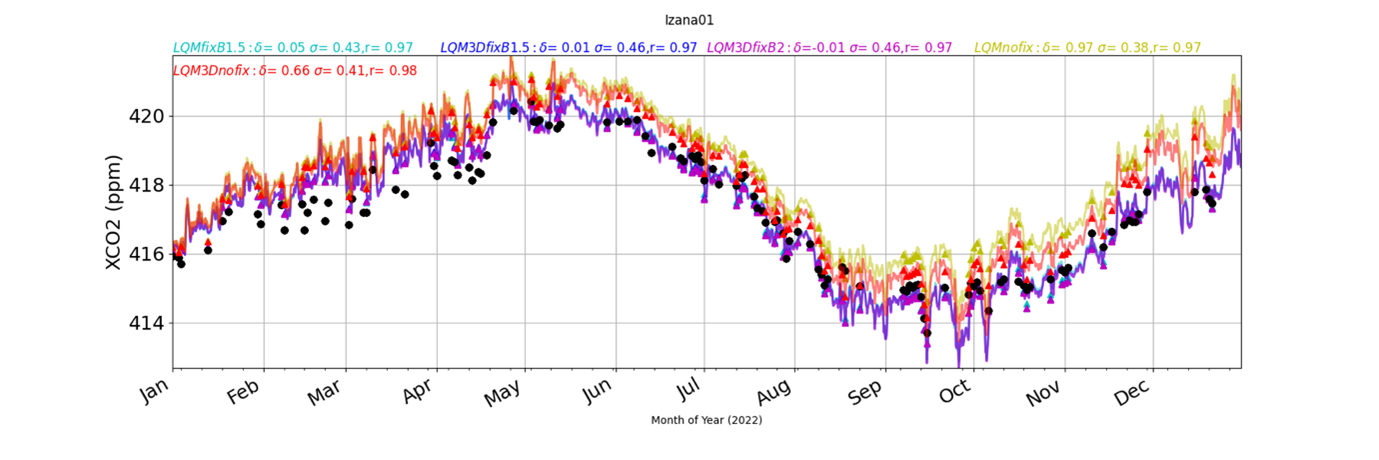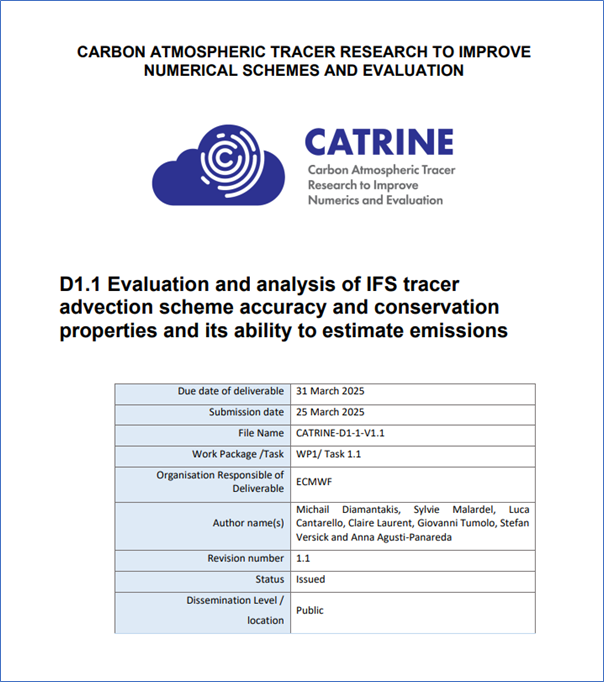The advection scheme is a numerical method used to solve the Partial Differential Equations (PDEs) which represent the resolved (non-parametrized) part of the transport.
In a recent study (CATRINE deliverable D1.1: CATRINE-D1-1-V1.1.pdf), we conducted a detailed assessment of the advection scheme of the global CO2MVS model IFS, focusing on its ability to conserve tracer mass and accurately simulate tracer transport. We developed a suite of standard academic tests cases, along with newly designed ones to highlight sensitivities, pinpoint errors, and to stress test the IFS advection scheme. These are valuable diagnostic tests for identifying weaknesses and guiding improvements. Additionally, using the optimized fluxes from Work Package 7, we assessed the IFS’s capability to accurately simulate CO₂ transport concentrations near both anthropogenic emissions sites and clean-air sites. Two key advantages of the IFS model are its ability to produce accurate wind forecasts—crucial for transport modelling—and its computational efficiency, as it can use long time steps and handle many tracer species simultaneously without compromising speed.
Overall, our results are encouraging: IFS simulations using the cubic-octahedral Gaussian grid and the COMAD cubic interpolation scheme, combined with mass fixers for restoring conservation, demonstrate good performance in replicating observed CO₂ concentrations across a variety of sites. An example can be seen in Figure 1. While modest magnitude biases at clean-air sites are noticeable at a few locations (not shown here), most prominently in Antarctica, it remains unclear whether these are caused by the IFS transport scheme itself or by uncertainties in flux inputs. Further investigation is therefore required.


Figure 1. Validation of different IFS simulations at 25km horizontal grid spacing against TCCON observations at two sites: Izana in Tenerife (top) and Karlsruhe in Germany (bottom). Each simulation has run for 1 year and has used WP7 flux protocols. Black dots represent XCO2 averaged observations and continuous lines the same quantity from different model simulations. The purple line represents a simulation which includes the COMAD interpolation scheme and an optimized version of the mass fixer. Units are in ppm.
Our test cases highlighted that tracer fields with smooth distributions yield minimal mass conservation and transport errors, while sharp gradients significantly amplify such errors. In cases with sharp gradients, one of the biggest culprits for conservation errors is the interpolation limiter used by the semi-Lagrangian advection scheme. While it effectively prevents spurious values, it can compromise mass conservation. Another key finding was that the vertical advection poses greater conservation challenges than horizontal advection. Terrain complexity also contributes to conservation errors, with its influence noticeable even in tracer transport occurring several kilometres above orography—though these effects gradually diminish in the stratosphere. Additionally, we found that because of the non-flux formulation of the IFS equations and its advection scheme, the largest conservation errors are observed near the boundary and under converging flow conditions. The COMAD interpolation option in IFS mitigates this issue to some extent by approximating the behaviour of a flux-form scheme.
Finally, our findings demonstrated that the IFS transport scheme with the mass fixer remained robust across various resolutions, even at the most challenging tests. Comparisons with the ICON model showed good agreement, while early inversion tests using a newly developed Observing System Simulation Experiment (OSSE), indicated that enforcing conservation seems beneficial for inversion accuracy. However, additional work is required to understand various sensitivities in the inversion OSSE. The outcomes of this report are driving the ongoing improvements outlined in our upcoming deliverable, D1.2.


